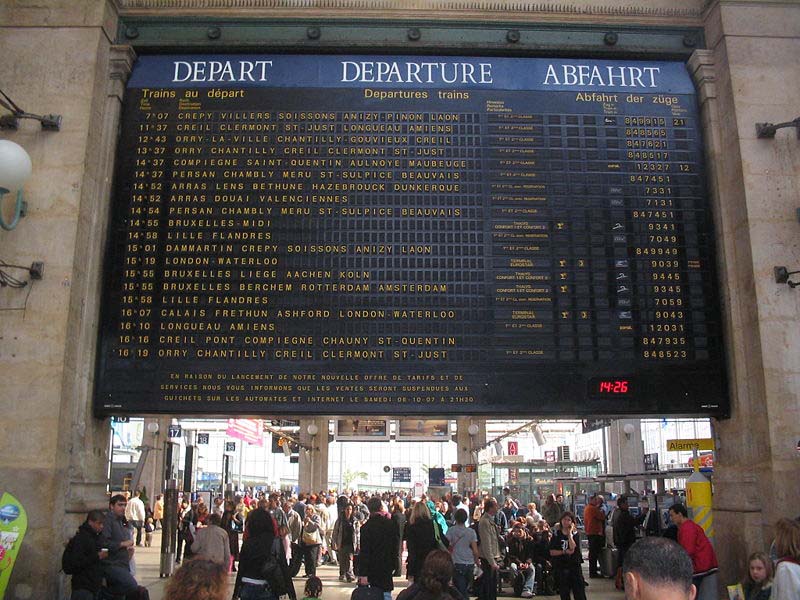Last weekend, we went to Oslo. This was a particularly exciting adventure, since neither of us had been to Norway before. As much as possible, we try to avoid places that one of us has been to. (But see Loire Valley vacation, to come next week). We love exploring new places together and trying to figure it all out for the first time.
And Oslo is a pretty cool place. I especially appreciated it as an amateur architectural aficionado. Oslo presents an extraordinary diversity of building styles, and they seem to construct very few low-quality structures.
 |
| Oslo City Hall |
 |
| The Nobel Peace Prize museum |
 |
Housing on the fjords
|
 |
| Vigelandsparken, in Frogner Park |
 |
The trees seem to only turn yellow, never red.
|
We really wanted to see the Norwegian fjords while we were there. Unfortunately, almost all of the boat trips shut down at the end of August, so we had only had one tour to choose from. We were wondering why on earth the Norwegians would close down one of their major tourist attractions when there were clearly still at least some tourists visiting, and we quickly learned the answer. It is COLD in Norway after September.
 |
| The boat provided multiple blankets per passenger. I might have gotten frostbite without this provision. |
Although we shivered the whole way, we learned a surprising amount about Norwegian geography. Fjords, which are basically just inlets surrounded by big mountains, are formed not just by water carving out the rock, but by huge tectonic shifts in the rock bed.
A good rule of thumb with fjords is that the inlets are as deep as the mountains are tall. The mountains around Oslo aren't terribly tall, so the fjords we went on weren't as impressive, comparatively speaking. I still thought they were really cool.
It's not a huge cliff face, but it's still beautiful. This fjord has no reason to feel inadequate
The Norwegians also think the fjords around Oslo are pretty cool. The country's most expensive real estate is on the banks of the fjords.
You can't afford this house.
By the way, saying something is "the most expensive ___ in Norway" is quite a statement. The country is very pricey. This is mostly attributable to Norway's massive oil wealth and its refusal to join the Euro zone. At $62,000/year, Norway has the third-highest national per capita income. So the Norwegians walk around loaded with money and consider a $40 meal to be super cheap.
An artist's description of Norwegians walking among peasant Euro-zone members. (Not really)
Remarkably, though, the royal family of Norway doesn't possess vast stores of wealth. Perhaps this is due to the recent re-emergence of the Norwegian monarchy. The Norwegians elected a king in 1905. Or maybe they just find massive royal wealth tacky.
The palace of King Harold V. It's no Versailles
Can I sell of my share of the Nobel Peace Prize to help pay for this trip? Here, I took it upon myself to accept a [chocolate] medal on behalf of all Europeans. It was delicious.
My favorite free entertainment in Oslo was Vigelandsparken, a sculpture garden filled by Norwegian sculptor Gustav Vigeland. Vigeland was pretty cool. In these works, he works exclusively with the human form, creating structures and scenes out of nude figures. Some are funny, some are intimate, and some are just innovative.
Through the bars, you can see a pillar made of humans.
If done properly, a visit to Vigelandsparken is highly interactive.
"Vigelanding," similar to "planking," is taking off in some parts of Europe. Specifically, anywhere that Catherine is. The goal is to make all of the other tourists give you funny looks and then imitate you.
Lastly, no trip to the land of the Vikings is complete without a trip to the Viking Museum. The museum contains three well-preserved ships and three well-preserved Viking skeletons. I was most surprised by how sophisticated Viking culture was, given my stereotypes about Viking invasions. I don't think the museum did a good job of portraying them as gentle, though. The museum said, "But the Vikings didn't just pillage and rape and kill. Occasionally, they also farmed the land after conquering it."
When you see this, you know your village is doomed.
Closeup of the bow of the Viking ship.
Viking shoes! Perfect for plundering.
We spent a full weekend in Oslo, but I still felt like there was much more to see. If I ever save up enough money, it's a city I'd love to go back to. If you already have money and are considering the trip, there's no reason to hesitate. Everyone in Oslo spoke perfect English, and the city was easy to navigate.
By the way, I've added a lot of links to this post for people like me who always want to learn more about what they read. Let me know what you think!


























